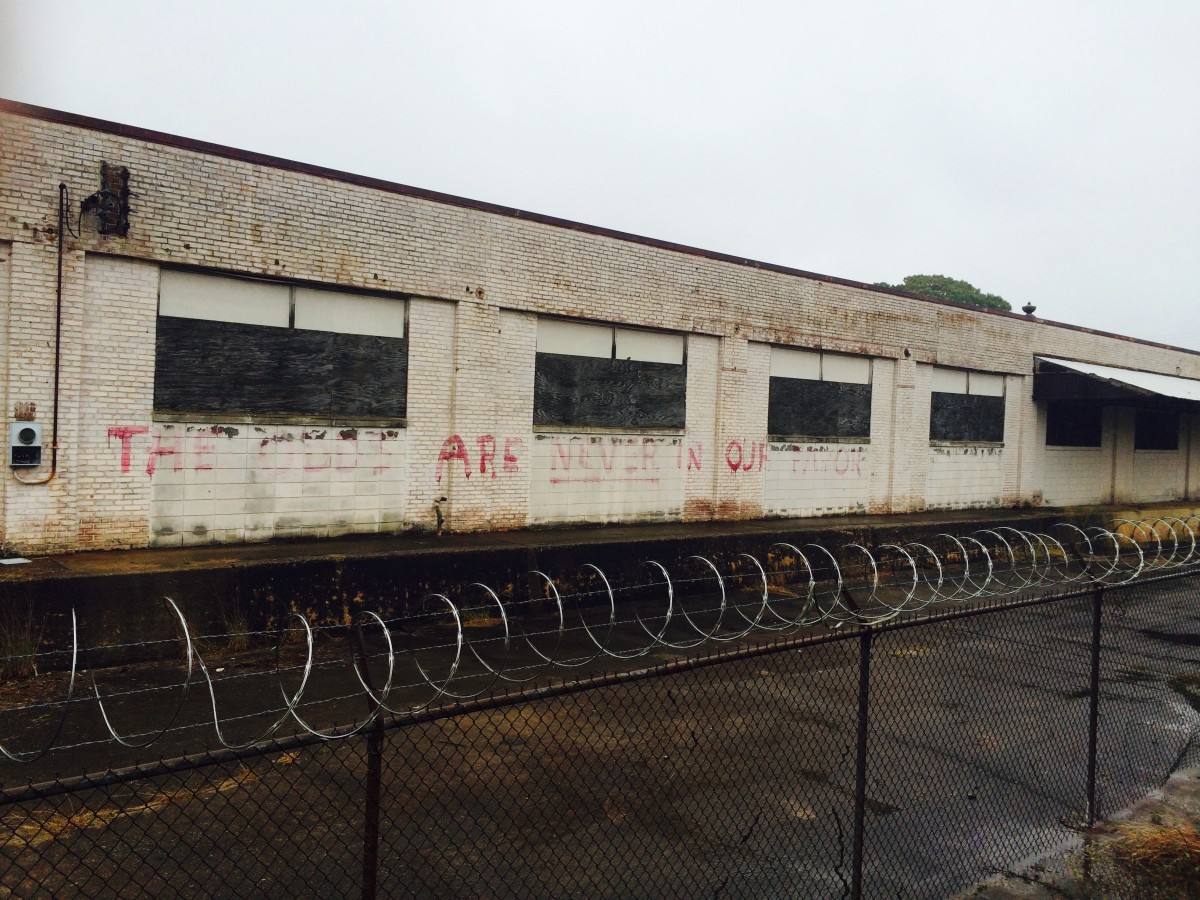The Murphy Triangle: A Historic Railroad Hub in Atlanta
If you are interested in the history of railroads and industry in Atlanta, you might want to visit the Murphy Triangle. This area, located southwest of downtown Atlanta, is a historically significant railroad center, where two major railroads, the Southern Railway and the Beltline, intersected. Out of this intersection grew a substantial center of industry, ranging from lumber and metal to oil and wire. The Murphy Triangle also served as a major node for the State Farmers Market, a 1941 complex of 10 long, low sheds with gable roofs, where farmers and vendors sold their produce and goods, the Hanson Motor Works, and the Nabisco factory.
 |
A shed at the old Atlanta Farmers' Market provided shelter to farmers' crops. (Patrickbatl photo, Wikipedia Commons) |
As part of the Atlanta Beltline project, the Murphy Triangle is being converted from an industrial area into a 20 acre destination known as Murphy Crossing. According to the Beltline site, "Murphy Crossing is a key 20+ acre site owned by Atlanta BeltLine, Inc. directly on the Westside Trail with significant potential to positively impact development in southwest Atlanta. Situated at 1050 Murphy Avenue, the property sits within the Oakland City neighborhood and is bordered by the neighborhoods of Adair Park and Capitol View. It lies in close proximity to the Oakland City and West End MARTA stations, providing a critical conduit for connectivity and development within southwest Atlanta."
%2C%20John%20Nelson.png?itok=T53IlCvG) |
| Cartoon of the Murphy Triangle Redevelopment proposal as Murphy Crossing. (Image: Urbanize Atlanta) |
The Murphy Triangle is not only important for its industrial history, but also for its architectural and cultural heritage. The area contains a variety of industrial buildings, some of which are eligible for listing on the National Register of Historic Places. Some of the most notable buildings include:
 |
The Bailey Burruss Foundry, a 1930 steel and glass building with a three-tiered shed roof system, where metal parts and machinery were produced. Today, it is the Lifecycle Building Center of Atlanta. |
 |
The Cut Rate Box Company, a 1920 mill complex with brick and heavy timber construction, where cardboard boxes and containers were made. This is a rendering of it post-conversion to office space. |
The Murphy Triangle also reflects the changing nature of transportation and industry throughout the 20th century, from railroad dependence to trucking. The area has suffered some significant losses, such as the demolition of the Hanson Motor Works, the only locally owned auto manufacturer, and the relocation of the State Farmers Market.
 |
| I wasn't able to find a picture of the Hanson Motor Works, but this is a Library of Congress photo of a Hanson Six that was too classy not to share. |
However, the area also presents a wonderful opportunity for reuse and redevelopment, as many of the buildings are suitable for conversion to residential and commercial uses.
 |
"The Atlanta BeltLine intends to overturn the sentiment expressed in this graffiti on a building that once served as the State Farmers Market: "THE ODDS ARE NEVER IN OUR FAVOR" Credit: David Pendered" (Saporta Report). |
The Murphy Triangle area is part of the Southside Trail, which connects the Westside and Eastside trails, and offers access to several parks and neighborhoods. The Beltline also showcases the art and culture of Atlanta, with a linear outdoor art gallery featuring murals, sculptures, and photography from local artists. The Beltline is a great way to explore the city and discover its history, diversity, and creativity.
 |
Bike riders enjoy the Southside Trail near Pittsburgh Yards. (Photo: The Sintoses) |
 |
The Southside Trail passes over Metropolitan Parkway just south of University Avenue. (Photo: The Sintoses) |
Thanks as always for reading!




Comments
Post a Comment